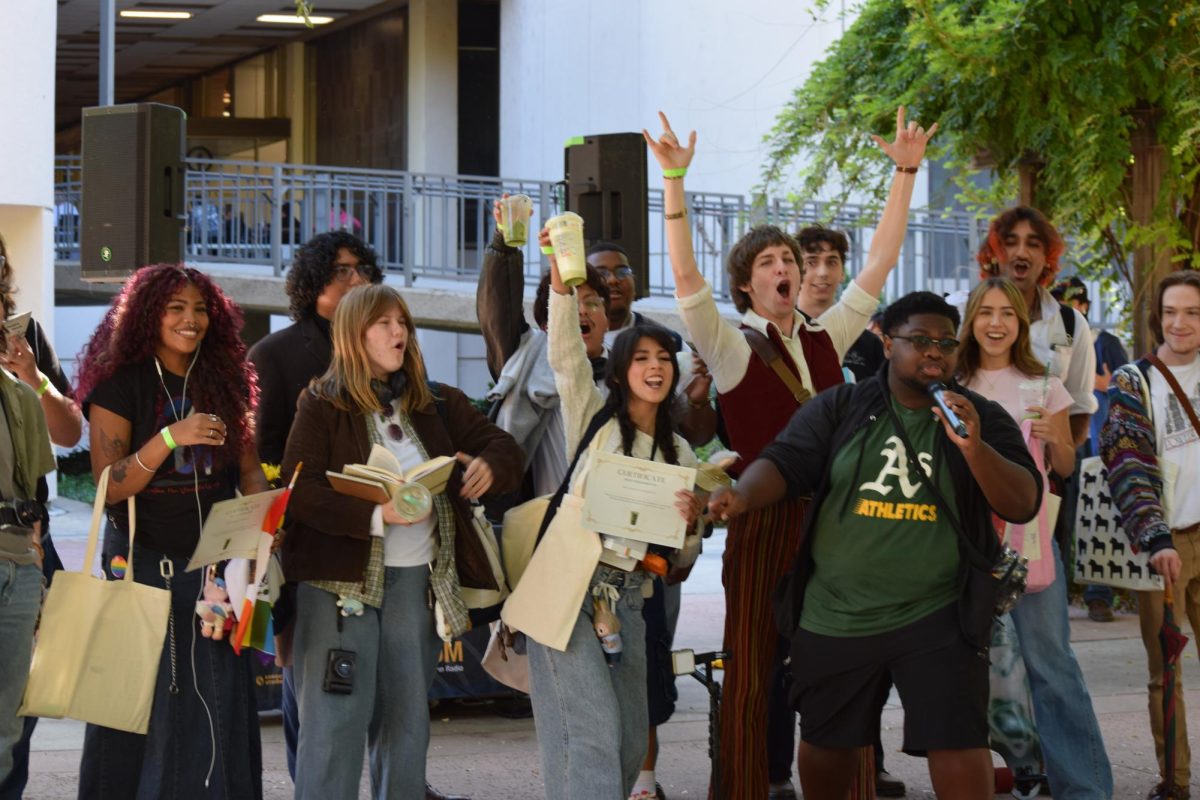Bill to limit student fee increases
May 4, 2010
A Senate bill that attempts to provide some relief to college students by limiting student fee increases each year is now being amended in the Legislature.
Senate Bill 969, authored by Sen. Carol Liu, D-La Cañada Flintridge, would impose a percentage cap on how much the California State University Trustees and UC Regents can raise student fees each year.
The board of trustees is the governing body of the CSU system and the Regents govern the UC system.
In an earlier version of the bill, the cap was at 5 percent of student fees from the previous academic year.
Robert Oakes, Liu’s spokesman, said this version of the bill seeks to give some predictability to student fee increases and start the discussion on what would be an appropriate percentage cap.
“People and families know that the cost of education continually increases. It’s a roller coaster of fees, and when you are a student or parent trying to budget for the next four years, it can be difficult,” Oakes said.
The bill also requires that any CSU and UC fee increases cannot go into effect until six months after the decision.
Senior government major John Ryan, who testified in support of SB 969, said students had to come up with the extra money to go to school because of the fee increases imposed since last year.
Last year, Sacramento State increased student fees by 12 percent.
“The fee hikes have been a serious strain on all of us this year,” Ryan said, “We are also paying 33 percent more in tuition fees and because of the furloughs, we are getting 10 percent fewer classes.”
The CSU system does not support the bill because student fees guarantee revenue to the system, said CSU spokesman Erik Fallis in an e-mail to The State Hornet. State support has decreased by 21 percent over the last two years.
Fallis said the CSU system does not want to increase student fees, but because of the decline in state support, it has been forced to implement cost-cutting measures, such as fee hikes, employee furloughs, layoffs, course reductions and decreased enrollment.
Because adequate state funding is not guaranteed every year, the CSU has no idea of what kind of funds it has to budget, Fallis said.
The CSU system may need to raise student fees more than the designated percentage if the state is in tough economic times, Fallis said.
If state support continues to decline in the upcoming years, “student access, course offerings and educational quality could be greatly diminished at the CSU,” he said.
Fallis said the CSU would support the bill if the state can guarantee funding to the system instead of taking away money from the universities.
Tim Hodson, director of the Center for California Studies at Sac State, agrees that the lack of state funding for higher education is causing universities to implement unfavorable cost-cutting measures.
If public universities want a guaranteed amount of state funding every year, a constitutional amendment would have to be proposed, Hodson said. An amendment requires a two-thirds vote from the Legislature.
“If somebody proposed a constitutional amendment for funding for the universities, the Legislature might be able to do it. Both Democrats and Republicans understand how important education is for the economy,” Hodson said.
However, a constitutional amendment for higher education might be at the cost of the poor, Hodson said.
In order to guarantee funds to higher education, funds would have to be taken from other social services programs.
“I am perfectly willing to argue that it is important to provide funding to the UCs and CSUs. We need to improve our education system, but there are tough choices out there. There are a lot of Democrats who would say we could cut the students or we could cut the senior citizens and the poor,” Hodson said. “Who can survive better? Who is the most deserving? It’s just making that choice.”
Hodson said the most effective way to cut money from the universities’ budget is to cap enrollment.
For every student who attends a CSU, his or her fees only cover one-third of the actual costs, he said.
Hodson said that although other universities, such as CSU Northridge, keep increasing enrollment, it doesn’t help the big picture.
“We are shooting ourselves in the foot because we send the message that we can continue to educate more and more students with less and less money,” Hodson said.
Although SB 969 does not address state funding for the universities, Oakes said state funding and student fee increases go hand in hand.
“Eventually, we’ll have to have some steady level for state funding for higher education so that we can have a steady level for fees,” Oakes said, “That has to be part of the budget process and a separate track. We need a system that is sufficiently funded because otherwise it provides unpredictability for everyone.”
Lauren Greenwood can be reached at [email protected].




























































































































